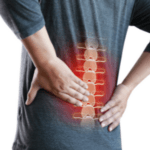In the first in a series of three articles, John Glover offers some practical observations on machinery safety and what it could mean for businesses.
Food and drink manufacturing is a great British success story. The largest manufacturing sector, it has also demonstrated resilience and resolve to adapt and grow. This has not been easy but over the next few years the management of the food and drinks companies are forecasting an increase in procurement spend. This clearly means an investment in machinery and production process lines.
Some organisations that will need to invest in these capital-intensive projects will have, at some point, heard a few myths about machinery safety.
Sometimes these myths are due to a company’s own safety culture but it depends how this has been shaped over recent years.
Others are professionally honed with clearly defined goals and responsibilities with open proactive actions and employee empowering engagement but their cultures may be missing in action and as a result are totally ineffective. The single common thing to all of them is that they have experienced machinery safety myths.
Myths and misconceptions
Some of the most common safety myths are:
- We haven’t had any machinery accidents for several years so we have a very safe operation.
- Safety performance is an individual issue, not a company issue. It is the responsibility of the health and safety manager to look after the machinery and process safety anyway.
- Increasing machine safety is always costly and it reduces production.
- He is responsible for machine safety throughout our plant as he is the chief engineer. It is not our problem and if anything goes wrong, then he or she is to blame.
- We plan to increase our efforts towards machine safety next year but it will depend on the budget as we have our shareholders to consider.
- A return on investment in machine safety… where did you hear that?
For many machine operators, plant managers, business owners and stakeholders, safety is not at the forefront of their minds. It’s one of those classic safety struggles, between safety and productivity; safety and cost; safety and convenience. But by dealing with these issues at an early stage and by implementing a proactive machinery risk management policy and procedure, companies should see a systematic shift from constantly ‘fire-fighting’ and ‘crisis management’ to proactive decision making before any problems arise.
By anticipating what may go wrong and making sure that this becomes part of every-day business practice as well as making sure that the management of machine hazards and associated risks become an integral part of the business, just like the management of corporate or financial risk is, businesses will improve safety.
In part 2: how to anticipate trouble and allocate the right resources.
John Glover is director of Glover Associates & Consulting Ltd and has practised health and safety law and safety of machinery for a number of years. He has extensive knowledge of the subject and contributes regularly to magazine articles. After having worked for a world leading health and safety organisation specialising in machinery safety, John set up his own health and safety consultancy, Glover Associates & Consulting Ltd. This then fulfilled his vision for the provision of machinery safety and occupational safety services to commerce and industry alike including manufacturing, oil and gas, energy and power generation.
Should you wish to contact Glover Associates & Consulting Ltd about this article then please do not hesitate to contact us www.gloverassociates.co.uk or email John at [email protected].
Approaches to managing the risks associated Musculoskeletal disorders
In this episode of the Safety & Health Podcast, we hear from Matt Birtles, Principal Ergonomics Consultant at HSE’s Science and Research Centre, about the different approaches to managing the risks associated with Musculoskeletal disorders.
Matt, an ergonomics and human factors expert, shares his thoughts on why MSDs are important, the various prevalent rates across the UK, what you can do within your own organisation and the Risk Management process surrounding MSD’s.

